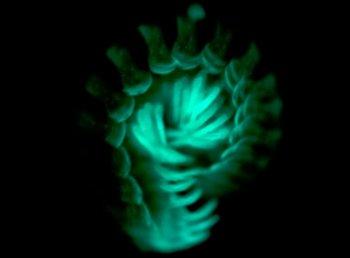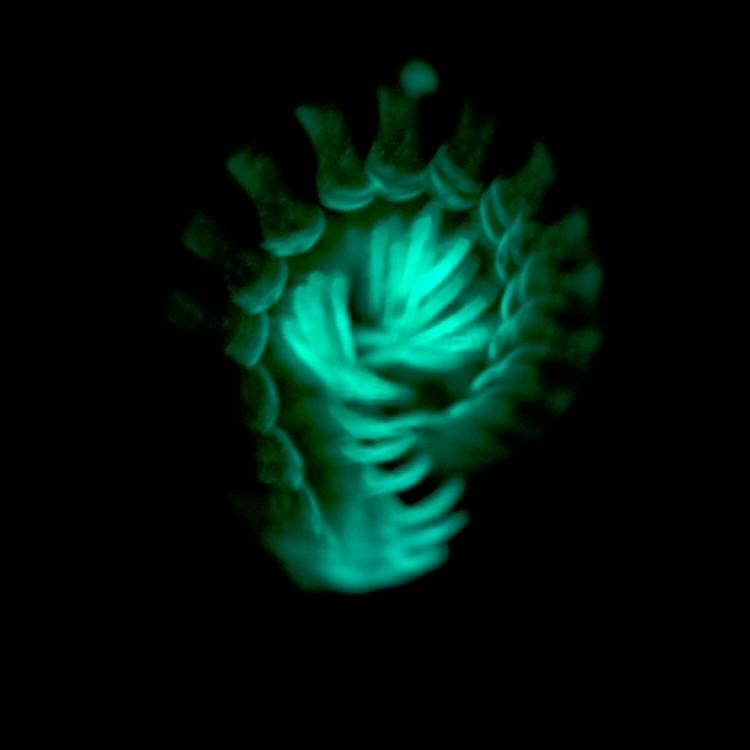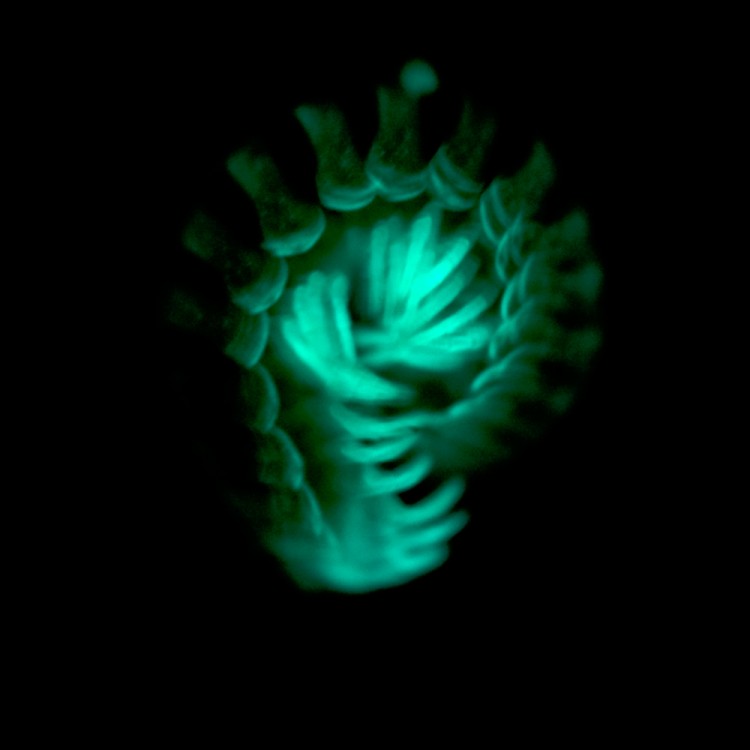Beware, Says Bioluminescent Millipede
Glow-in-the-dark millipedes in the genus Myotyxia are sending a message to their predators: keep away.

A prolonged exposure taken in the darkroom, showing the greenish glow of a Motyxia millipede. Paul Marek
|Updated:





